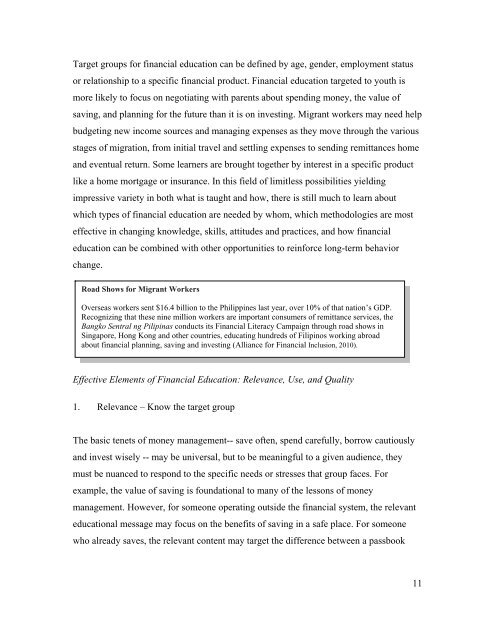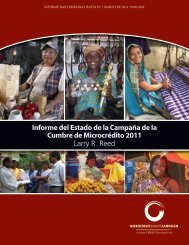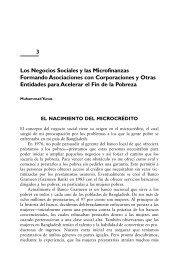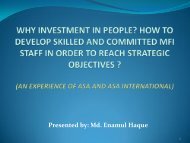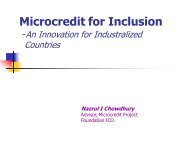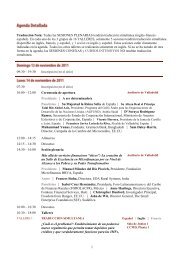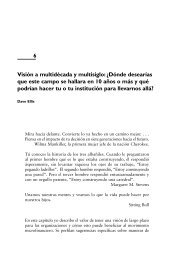Financial Literacy: A Step for Clients towards Financial Inclusion
Financial Literacy: A Step for Clients towards Financial Inclusion
Financial Literacy: A Step for Clients towards Financial Inclusion
You also want an ePaper? Increase the reach of your titles
YUMPU automatically turns print PDFs into web optimized ePapers that Google loves.
Target groups <strong>for</strong> financial education can be defined by age, gender, employment status<br />
or relationship to a specific financial product. <strong>Financial</strong> education targeted to youth is<br />
more likely to focus on negotiating with parents about spending money, the value of<br />
saving, and planning <strong>for</strong> the future than it is on investing. Migrant workers may need help<br />
budgeting new income sources and managing expenses as they move through the various<br />
stages of migration, from initial travel and settling expenses to sending remittances home<br />
and eventual return. Some learners are brought together by interest in a specific product<br />
like a home mortgage or insurance. In this field of limitless possibilities yielding<br />
impressive variety in both what is taught and how, there is still much to learn about<br />
which types of financial education are needed by whom, which methodologies are most<br />
effective in changing knowledge, skills, attitudes and practices, and how financial<br />
education can be combined with other opportunities to rein<strong>for</strong>ce long-term behavior<br />
change.<br />
Road Shows <strong>for</strong> Migrant Workers<br />
Overseas workers sent $16.4 billion to the Philippines last year, over 10% of that nation’s GDP.<br />
Recognizing that these nine million workers are important consumers of remittance services, the<br />
Bangko Sentral ng Pilipinas conducts its <strong>Financial</strong> <strong>Literacy</strong> Campaign through road shows in<br />
Singapore, Hong Kong and other countries, educating hundreds of Filipinos working abroad<br />
about financial planning, saving and investing (Alliance <strong>for</strong> <strong>Financial</strong> <strong>Inclusion</strong>, 2010).<br />
Effective Elements of <strong>Financial</strong> Education: Relevance, Use, and Quality<br />
1. Relevance – Know the target group<br />
The basic tenets of money management-- save often, spend carefully, borrow cautiously<br />
and invest wisely -- may be universal, but to be meaningful to a given audience, they<br />
must be nuanced to respond to the specific needs or stresses that group faces. For<br />
example, the value of saving is foundational to many of the lessons of money<br />
management. However, <strong>for</strong> someone operating outside the financial system, the relevant<br />
educational message may focus on the benefits of saving in a safe place. For someone<br />
who already saves, the relevant content may target the difference between a passbook<br />
11


